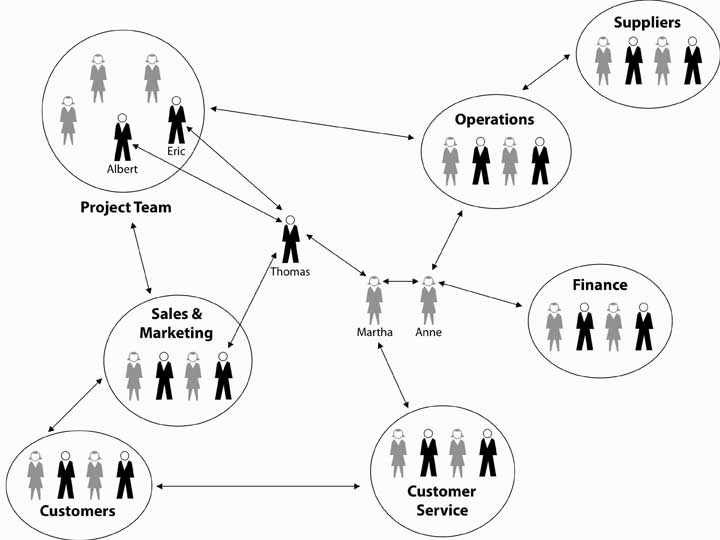All HR professionals know that one of the biggest struggles in Organisation Design is to get managers to move away from simply reasoning in terms of “Organizational Charts”. I guess you all have faced the common scenario in which a manager involves you in the need of an organisational change, and starts the discussion… with an already drafted Organisation Chart.
What should be the last step in an articulated process, becomes instead an assumption, which too often ends being a self-fulfilling prophecy, where change is often just a way to achieve other goals.
Probably this is one of the main reason why some authors have already started wondering if we should definitely kill the OrgChart, also as a tool to simply guarantee compliance, or at least just write it in pencil.
In a very interesting post about the Five Myths of Organisational Design, Naomi Stanford goes to the origin of the word myth to explain the one she has selected first: Design is about the organisation chart. “The myth arises from thinking that the formal elements that can be expressed on a chart are the organisation. Why and how this myth persists could be to do with attitudes and beliefs around formal relationships.“
A lot is probably due to the fact that OrgCharts easily interpret the aspiration of vertical growth in an organisation. Despite all efforts, too many people still look at this element, especially from a. psychological point of view. And also try to represent the complexity of career models (how many times did we watch a box in the org chart being placed a few millimetres below an other, just to underline different seniority?)
For decades, managers imagined that corporate ladders were motivating and that dreams of climbing them would drive superior performance’
Margaret Heffernan, Hierarchies lie at the root of corporate decay
For sure OrgCharts represent a good way to visualize context. However, they fail at representing the complexity of today’s organization in many ways. Has anyone succeeded in really making a matrix organisation work with an Organisation Chart representation? What about key relationships at work? Organizational Network Analysis very often describes much better the power and collaboration lines in an organisation, than an org chart. And as we experiment with new organisational structures, the OrgChart start losing a lot of its appeal.

No one of the alternative ways to display org relationships has really appealed to me, so I don’t think we’re going to say goodbye to it in the short term. However we need for sure to work with managers and leaders to ensure that organisational change does not happen by simply moving boxes on a chart, and instead, look at all the elements that constitute an organisation, and that is often left out (thinks governance just as an example).
What’s you point of view on Organisation Charts? Should they still exist?

[…] of this, I’m afraid, is also to make some managerial coordinating roles redundant (thus flattening org charts). If people are able to work remotely, self-organizing their work, the question about a lot of […]
[…] posed by the above is the critical challenge for HR. Our entire profession has been focused on designing jobs and finding and developing talent to do the work associated with that job. Too often we […]
[…] introducing a new Org Chart for their function. I’ve already discussed the fact that I think Organisational Charts way too often end up being a simplistic representation of an Organisation. What however is way […]
[…] or 3×3 matrix that seems to dominate our way of thinking. And I would add as well OrgCharts, as these often create artificial categorisations when visually splitting an […]
[…] I can’t agree more about each one of these statements. Especially on the link with business strategy, as well as on the fact that it is not a repair job. The book is also very clear that Organisation Charts are only one aspect of the work (something we’ve already spoken about). […]
[…] does not happen in traditional command and control structures. It occurs outside org charts and despite management levels. From this point of view, most of the new […]
[…] component for Agile Transformation. I have also discussed previously the fact that drawing an Organisation Chart is not the main aim of Organisation Design. I’ve also recently reviewed the Guide on Organisation Design by Naomi Stanford, a […]
[…] although I have also mentioned that each organisation needs to find its own one. Note: an Organisation Chart can help understand what is the Organisation Model, but it’s not sufficient alone, as it is […]
[…] Business Model unless something critical hits them, and they tend just to make sure their organisation charts are up to date. In cycle, they will get the newest Fad words, and ensure that one area in […]
[…] some is the identification of Corporate Strategy with the way the Organisation is designed. Organisation Charts alone don’t tell the real story, and again the risk is that we mix Execution with the way we […]
[…] phase that some elements of what we consider Organisation Design start appearing. Organisation Charts, Strategy Documents, Process Definitions… these often emerge from the work of individual managers […]